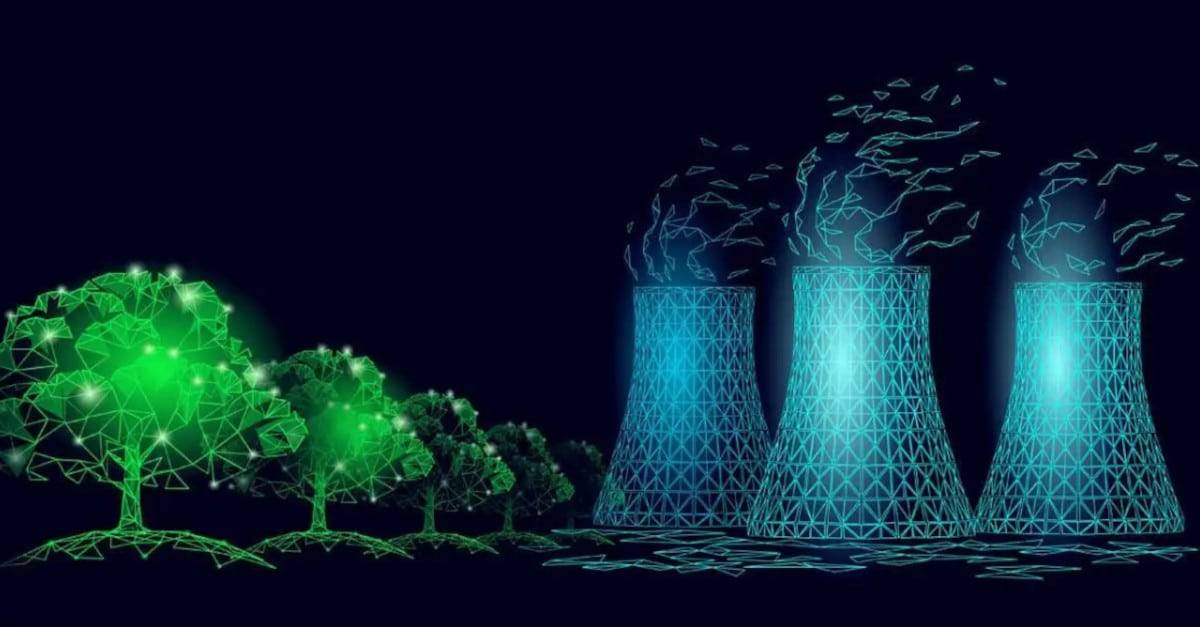“We determine that nuclear energy capacity should at least triple by 2050 from current levels to help achieve global goals for decarbonisation, clean energy supply, and enhanced energy resiliency and security,” declares the joint statement. The signatories to the call are Bulgaria, Canada, the Czech Republic, Finland, France, Ghana, Hungary, Japan, the Netherlands, Moldova, Mongolia, Morocco, Poland, Romania, Slovenia, South Korea, Sweden, the United Arab Emirates, the United Kingdom, the United States, and Ukraine.
Three reasons to Support Nuclear Energy
Nuclear companies and associations stress that nuclear has a proven track record of decarbonisation, including in hard-to-decarbonise sectors. At the moment, nuclear power generation supplies an average of 2,500 TWh of electricity per year. The nuclear reactors currently supply about 10% of the world’s electricity and about a quarter of low-carbon electricity worldwide.
Compared to fossil fuels, nuclear energy is considered a zero-emission, clean energy source. According to the Nuclear Energy Institute (NEI), the United States avoided more than 471 million metric tonnes of carbon dioxide emissions in 2020. That’s the equivalent of removing 100 million cars from the road and more than all other clean energy sources combined.
Finally, nuclear energy produces more electricity on less land than any other clean-air source. A typical 1,000-megawatt nuclear facility needs a little more than 1 square mile to operate. Wind farms require 360 times more land area to produce the same amount of electricity, and solar photovoltaic plants require 75 times more space.
Elevate Your Wealth Game: Empowering UHNWIs for Simplified Asset Management. Altoo Platform Preview
Nuclear Power Perspectives
For the first time since the Fukushima Daiichi accident a decade ago, the International Atomic Energy Agency (IAEA) has revised up its projections of the potential growth of nuclear power. In March 2011, after an earthquake, the tsunami disabled the power supply and cooling of three Fukushima Daiichi reactors, resulting in 2313 disaster-related deaths in Fukushima prefecture. Even though the change in the IAEA’s perspective does not yet mark a new trend, it comes as the world aims to move away from fossil fuels to fight climate change.
Many countries like Belarus, the United Arab Emirates, Turkey, Bangladesh, Sri Lanka, Uzbekistan, Uganda, or Jordan in the Middle East are either considering or already building their first reactors. Then, there are states with a long tradition of using nuclear power. For example, France derives about 70% of its electricity from nuclear energy due to a long-standing policy based on energy security. The United States is the largest producer of nuclear power. The breakaway global leader in new nuclear construction is China. China has 21 nuclear reactors under construction that will have a capacity to generate more than 21 gigawatts of electricity, according to the International Atomic Energy Agency.
New Technologies and Maintenance
Ageing management programmes and long-term operations are being implemented for an increasing number of reactors. About two-thirds of nuclear power reactors have been in operation for over 30 years. Despite the operation of some nuclear power plants having been extended to 60 and even 80 years, significant new nuclear capacity is needed in the long term.
Many new power plants will be needed to maintain nuclear power’s current role in the energy mix. Uncertainty remains regarding the replacement of these reactors, particularly in Europe and North America. New low-carbon technologies, such as nuclear hydrogen production or small and advanced reactors, will be crucial to achieving net zero.
To achieve the tripling of nuclear capacity by 2050, the nuclear industry is committed to working with governments, regulators, and other stakeholders. Nuclear power could provide solutions for electricity consumption growth, air quality concerns, and the security of energy supply. According to the IAEA’s high-case projection, nuclear energy could contribute about 12% of global electricity by 2050. Coal remains the dominant energy source for electricity production at about 37% for 2020, changing little since 1980.













